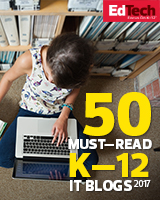Top Ten Posts of 2015 #6: Back to school ideas for social studies teachers

I’m sure most of you are doing the same thing I’m doing right now. Spending time with family and friends, watching football, catching up on that book you’ve been dying to read, eating too much, and enjoying the occasional nap.
Between now and the first week in January, you’ll get a chance to re-read the top ten posts of 2015. Enjoy the reruns. See you in January!
——-
We have two very simple unbendable, unbreakable rules in our house. No Christmas music allowed before Thanksgiving. No talking about school before August.
It’s August. So . . . we’re talking about school.
Spoiler alert.
If you’re not already at school, you’re heading there soon.
You probably already knew that. And you probably already have some idea of what you and your students will be doing during the first few days of school. But it’s always nice to have a few extra tips and tricks in your bookbag to start off the school year.
So today? The sixth annual Back to School Ideas in a Social Studies Classroom post. Use what you can. Adapt what you can’t. Add your own ideas in the comments.
What not to do
Before we get to the good stuff, it’s probably a good idea to think about what doesn’t work. Fourteen Things You Should Never Do on the First Day of School is great for reminding us of what it looks like when we’re screwing it up. Mark Barnes reminds of what our goal should be during the first few days of school:
You have many days to assess students’ strengths and weaknesses. You have months to discuss high stakes testing and standards. You’ll spend weeks probing the textbook.
The first day of school should be dedicated to rapport-building and to joy.
Your goal should be that students go home that night and tell their parents: “I’m going to love history class because Mr. Wiebe is awesome!”
And now the good stuff.
History Mysteries
History and social studies classes need to be about using evidence to solve problems. Start your kids off by encouraging this idea with a variety of mysteries and problems to mess with.
A simple activity to do this is called History in a Bag. Purchase or find enough brown paper bags for all of your students. Write a number on each bag and give one to every kid. Ask them to place five personal items into the bag, close it and to remember the number (for identification later). These items can be anything in their pockets, backpack, etc. Place all of the bags in a pile and have the students select one at random.
Provide a series of questions that they will answer as they attempt to decipher these “artifacts.” Is this person male or female? What do they think is important? How old is this person? Where do they live? The questions aren’t so important as the rationale used to answer the question. You want kids to start thinking about how we know what we know, to start to understand the historical process.
Have students get into groups of two or three to explain their answers. As a large group, ask kids to identify the owners of their bag’s artifacts. Lead a discussion about historical process and how we know what we know.
Kevin Roughton adapts the History in a Bag idea with his own Personal Artifacts. Why?
Harry Wong led me astray. After reading The First Days of School and having it drilled into my head that his methods were the be all, end all of classroom management I made myself into a clone. My first couple years I spent a ton of time the first few days practicing routines, reviewing procedures and explaining rules.
In other words, I spent the first few days doing everything I hated when I was a student.
I love this! So cool. Supports problem solving while encouraging a learning partnership between teacher and student rather than an adversarial one focused on rules and control.
Peter Pappas suggests something he calls The Detective Game. Same idea – the activity encourages working together to solve problems.
Another easy to use strategy that focuses on mysteries and problem solving is to host a Mystery Skype. At its simplest level, Mystery Skype is an educational game, invented by teachers, played by two classrooms on Skype. The aim of the game is to guess the location of the other classroom by asking each other questions. It works with all grade levels and is perfect for content like geography and history.
Start by heading to the Skype in the Classroom site and create a teacher profile. You don’t actually have to do this to use Skype as a teaching tool but as part of the deal, Skype gives you 12 months of free group video chats – allowing for multiple classrooms to chat at the same time. So . . . kind of a no-brainer.
Then just head over to the Mystery Skype site and get started. And again, remember, you can always just arrange your own Skype conversations with whomever you want. Going through the Skype in the Classroom site makes it easier for you to connect with other teachers.
Time Line Challenge
Print 10-12 photos from the time period you will be studying. Mix up the photographs and distribute them to random students in the classroom. Have the kids with photos head to the front and hold up their photo. Ask the rest of the class to work with those standing to correctly arrange the photos chronologically. Lead a discussion that allows kids to explain their order and to introduce future content.
It also works great to divide your class in half, give each group the same set of photos and have the two groups create “competing” timelines. Let them argue for the correct order and work to convince students in the opposing group to change sides. You might give extra credit to the group with the largest number of students. Provide the correct order and subtract points for any mistakes made by the “winning” group. Give those points to other group.
Video & Board Games
I’m a big believer in all sorts of games.Play is a good thing. Why not play a little (or a lot) during the first week? I wrote several weeks ago about my new favorite board game called Timeline – a perfect way to have fun while getting some formative assessment data about students’ prior knowledge.
The ReadWriteThink folks have a nice piece on using board games to support technical reading and writing. Some examples?
Need a few places to find even more? Start with the Center for Gaming and Learning and their their list to kickstart your thinking. Then head over to the Genosee Valley Educational Partnership. Use their search filter to find games specific to your grade and content.
There are also some quick and easy online games your kids can play during the first few days of school that focus on problem solving and collaboration:
- Pursued (Online geo game)
- Valiant Hearts (WWI mobile app / console game)
- Fantasy Geopolitics (Geo / World History / Current Events)
- Smarty Pins (Online Geo game)
- Mission US series (PBS US history sims)
- Stop Disasters (Geo / Econ sims created by UN)
Fence Sitter
One of the best things about being a social studies teacher is that we get to discuss and argue all of these great questions.
Should we have dropped the bomb? Is it ever okay to violate the Bill of Rights? What really happened during the Gulf of Tonkin incident? Is it legal for law enforcement to search student lockers? Why did the South lose the Civil War?
The problem, of course, is finding a structure that ensures that everyone gets involved. I’ve run across a great way to encourage participation and keep the focus on content.
It’s called the Fence Sitter activity and I’ve used it with elementary kids all the up to college age. It works every time! And you can set it up to work with just about any question or problem that has two opposing sides. Get all the details here.
Things That Suck
Okay. Depending on where and who you teach, you may need to change the title of this activity. But it still works great. Get the full skinny here but the basic idea is simple. Throw a statement or topic out to your kids and they have to decide whether that thing sucks or not. If it sucks, kids move to this side of the room. If it doesn’t? The other side.
Spend five minutes arguing . . . uh, discussing. Allow kids to move back and forth based on the arguments . . . uh, discussion. Then move on.
Start with stuff that’s easy:
- Pancakes (Doesn’t suck)
- Pizza with black olives (Sucks)
- Kansas City Chiefs (Doesn’t suck)
- Vladamir Putin (Sucks)
Then work your way up the cognitive ladder by asking kids to think about more serious stuff. It might be a way to introduce a new topic:
- Nixon impeachment
or review
- 100 Years War from English perspective
or a formative assessment:
- Three branches of government
Extra resources:
- Use the very cool Pro / Con site to get some more ideas and resources.
- Use Bill Selak’s Keynote template with timer
Kahoot and the New York Times
Kahoot is an very sweet little formative assessment tool that recreates the kind of timed bar trivia game that always catches my attention in Buffalo Wild Wings. It’s also a great way to engage kids in content, take surveys, and quickly get feedback on all types of questions.
So why not tie Kahoot together with the cool and handy current events resources from the New York Times Learning Network? It seems like match made in heaven to combine the NYT content with the engaging Kahoot platform.
Start with these:
- The history questions in their Test Yourself and our Daily News Quiz sections
- Civics-related Student Opinion questions
No matter what you use during the first week of class, be sure to have fun!
















Trackbacks & Pingbacks